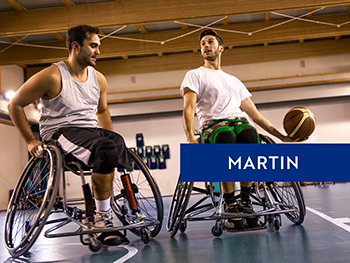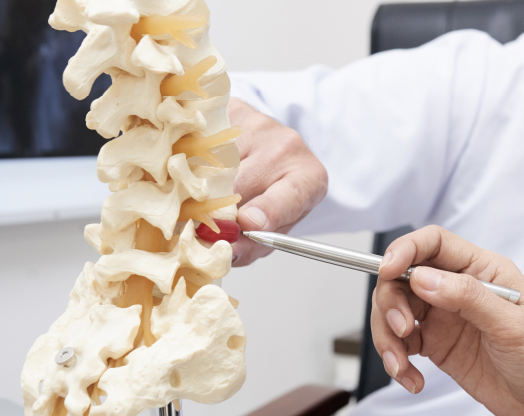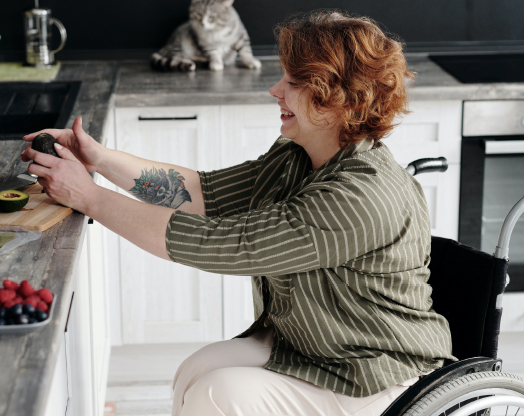Access to Medical Supplies
#PeeforFree
SCIO has been working with the Government of Ontario to gain commitments on essential needs that prevent severe complications for people with an SCI and other disabilities. Our government needs to examine the public coverage programs that fund catheters and related supplies and fix systemic and cost deficiencies.
The pandemic proved how fractured our health care system is. The people of Ontario should not suffer needlessly.
33,000
FIVE
82%
78%
57%
of people who use uncoated catheters experience 4+ urinary tract infections per year
86%
4x
90%
Policy Report
Over the last year, Spinal Cord Injury Ontario (SCIO) has worked with over 100 people with a spinal cord injury (SCI) and a group of committed stakeholders to understand current challenges and gather feedback about how the Ontario government could modernize public coverage for intermittent catheters and other related supplies.
The SCIO Policy Report: A Path to Modernize Public Coverage in Ontario for Intermittent Catheters and Related Supplies is the output from these broad stakeholder consultations.
The purpose of the Policy Report is not only to inform and provide expertise to policymakers on the importance of bladder supplies and the consequences when the appropriate supplies are not prescribed or affordable. The report also provides 9 recommendations for how to improve procurement, get better value and provide people with what they need; simply and efficiently.
Report highlights
Nine recommendations for the next Government of Ontario
These steps can modernize the funding programs for individuals needing to use intermittent catheters and related supplies. They will improve procurement and provide people with what they need; simply and efficiently.
Reducing red tape and finding system efficiencies
-
1Conduct an examination of the overlapping government programs across the different departments to assess hidden costs and opportunities to reduce red tape.
-
2Prioritize the implementation of a new modern funding program for intermittent catheters that delivers system and financial efficiencies for better patient care.
-
3Leverage best practices from other jurisdictions, e.g., Saskatchewan style program via approved distributors.
-
4Procure for a comprehensive medical supply coverage program that both allows for consistency of product choice through the continuity of care and prevents patients from the need to reuse single-use catheters.
-
5Support the Health Canada, nursing and physician position that reusing single-use intermittent catheters is not permitted.
-
6Ensure access to specialty nurses with knowledge, skills and judgment in bladder health and continence.
-
7Improve the hospital to community transition of Indigenous Ontarians who have suffered a spinal cord injury (SCI) or other health conditions that cause bladder dysfunction.
-
8Increase access to specialist nurses to improve assessment and timely access to products and supplies by filling out and submitting forms correctly.
-
9Determine how to better support Ontarians who work seasonally and who may have limited access to current funding information.
Community Narratives

Martin, 30, is paralyzed from the neck down. His catheterization is performed twice per day by a PSW – the cost of bladder care supplies are a great source of stress. Supplies include external catheters, catheters for intermittent catheterization, iodine solution and sterile sponges, and gloves.

Sarah, 25 has an active lifestyle, working, playing sports and travelling the world. She has discovered the various types of catheters and has found that she prefers different ones depending on the circumstances. She irrigates her bladder every morning, requiring a syringe tipped catheter.

John, 62, receives dialysis three times a week to stay alive. John had an SCI 25 years ago that resulted in paraplegia. A complication of the injury was a neurogenic bladder, requiring him to catheterize. Over the years, John has continued to work.

Nicole, 14, is a teenager born with spina bifida. She has used various types of catheters, and learned to self-catheterize as a child. While catheterization is a fundamental part of her life, it impacts activities such as school and socializing. As a child, Nicole missed important milestones like birthday parties and sleepovers due to not having the right catheter.
– Dr. Dean Elterman











